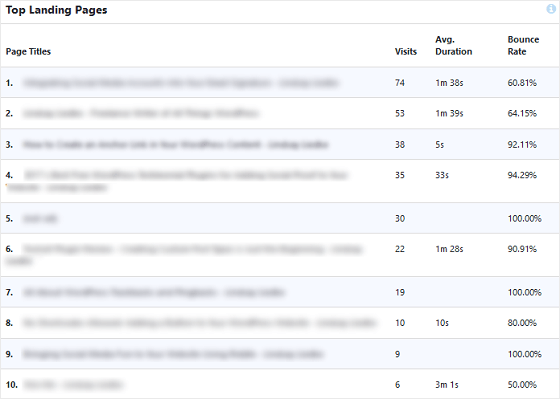Everyone wants their blogs to be successful. But for that, you need to ensure that you’re working in the right direction.
The best way to know that is to closely track and monitor some of the key factors that contribute towards the success of your blog.
Most bloggers consider website traffic as the ultimate source that decides if your blog will be in the top search results of Google. However, it’s important for you to know that there are several other factors too that need to be considered for this matter.
Here are 5 essential blog metrics you should track to get a better insight into your blog’s performance.
Tracking these metrics can help you come up with new strategies like content creation, email marketing, etc., to gain more traffic, boost your conversions, and eventually secure the top position in search results.
1. Site Speed
Website speed is one of the major ranking factors for Google. So it’s important for you to monitor the loading speed of your blog closely and ensure that your site performs well at all times.
If your blog doesn’t load within 3 seconds, the chances of your visitors abandoning your website increases to a great extent. If that happens your bounce rate will automatically spike up too.
This can severely affect your SEO and ranking in the top search results will become a major challenge. There are several free website speed test tools that can help you monitor your site speed easily.
By tracking your loading speed you can easily take action the moment you realize that its performance is declining. This will enable your site to continue offering top-notch performance round the clock.
2. Pageviews
The next important metrics to track is your blog page views. By measuring your page views, you get to identify which topic is getting the most views. That way you can find out the topics that people are enjoying the most in your blog.

You can then use this information to create more posts around that topic so you can increase engagement on your site.
Your pageviews also tell you about the posts with the least views. You can work on those posts and strategize on how you can improve them to boost your conversions.
3. Subscribers
Your blog subscribers are your biggest fans. Your subscriber count can tell you whether your content is valuable and is being liked by your visitors.
When your readers subscribe to your blog, they voluntarily give you their contact details so that you can notify them about your latest posts.

This is a clear indication that your content is doing well and your users want you to create more of such content.
So it’s important to track your subscriber’s count over time. You may occasionally see a decline in your subscriber’s list. And that’s okay because people’s preferences change over time and they may not want to receive your notifications forever.
But make sure that your count is steadily increasing with all the new content that you’re publishing. If you see that the growth has stopped or the subscriber’s count has declined consistently, you’ll know that it’s time for a change in your strategy. That can be in terms of your content, your marketing tactics, or can simply be your publishing schedule.
4. Backlinks
The next important metric to track is your backlinks. Backlinks, also called inbound links, are like a vote of confidence that will tell search engines about the relevance of your content. The more backlinks you get, the more likely it is for you to achieve a better ranking in search results.
In short, you need backlinks if you want to be a good player in the SEO game. So keep track of it. Tools like Google Analytics and Ahrefs can help you track them easily. By knowing the number of backlinks you have, you know how authoritative your website is on the internet.
5. Returning Visitors
Another major ranking factor in Google is the number of returning visitors. People will return to your blog only when your content makes an impact on them.
A high number of returning visitors is a clear sign of your content being liked by your users. If you’re attracting only new users to your blog and people aren’t willing to come back, that means you need to work on your content so you can engage them better.
Tracking your returning visitors can help you identify the type of content that interests them.
For example, if a blog post on how to invest money in the stock market has a high number of returning visitors, you should know that your visitors have difficulty with investing money in the stock market and your content is helping them solve their problem. So you can create more posts around that topic which can benefit them and increase your traffic and conversions too.
Over to You
Sometimes these numbers may disappoint you. But don’t let them discourage you. Instead, use them to identify your strengths and weaknesses and strategize on how to use these metrics to your advantage.
Digital & Social Articles on Business 2 Community
(53)
Report Post






